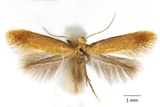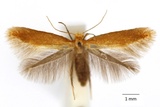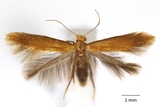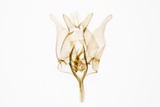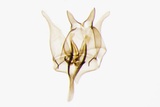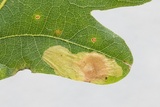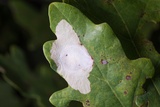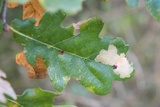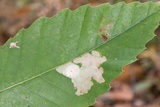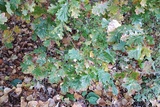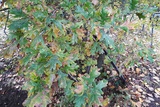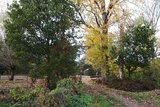Tischeria ekebladella (Bjerkander, 1795) Species
Last modified: March 17, 2024, 9:55 a.m.
A common species throughout Belgium.
Details
- Classification
- Family: Tischeriidae > Genus: Tischeria > Species: Tischeria ekebladella
- Vernacular names
- Gewone eikenvlekmot (NL), Oak Carl (EN), Große Eichen Schopfstirnmotte (DE)
- Synonyms
- Tischeria complanella (Hübner, 1817)
- First mention in Belgium
- De Sélys-Longchamps E. 1844. Énumération des insectes Lépidoptères de la Belgique. — Mémoires de la Société royale des Sciences de Liége 2: 1–35. On page 25 (as Elachista complanella H.). view page
- Status
-
Native
Distribution
Caterpillar
Yellow, with brown head capsule and greyish brown last abdominal segment.
Mine
A large, white mine on the upperside of a leaf; occasionally several mines can be found on one leaf. At the end of the development a semi-circular pupation chamber is constructed, which is visible because of the white spinning. Frass is ejected from the mine through a hole in the upper cuticula.
See also bladmineerders.be
Cocoon/pupa
A semi-circular pupation chamber lined with a lot of white silk inside. Pupa brown.
Bionomics
The egg is oviposited on the upperside of a leaf, sometimes several eggs on one leaf.
Already the earlier instars start to construct a semi-circular pupation chamber in the larval feeding place. This pupation chamber is lined with white spinning and therefore visible as a white circular spot with a light ochreous hue in the centre, in the otherwise whitish mine. The caterpillar often rests inside this pupation chamber between its feeding activity. It then lays in a bend position which can easily be observed when one holds the mine towards a light source. The species hibernates in the pupal stage.
The moths come to light.
Flight periods
The adults fly in May and June. During favourable years, a second generation develops of which the moths are on the wing in August.
Observed on
- Host plant (species):
- Quercus robur, Quercus petraea, Quercus rubra and Castanea sativa
- Host plant (genera):
- Quercus
The larva makes mines on Quercus and occasionally on Castanea.
